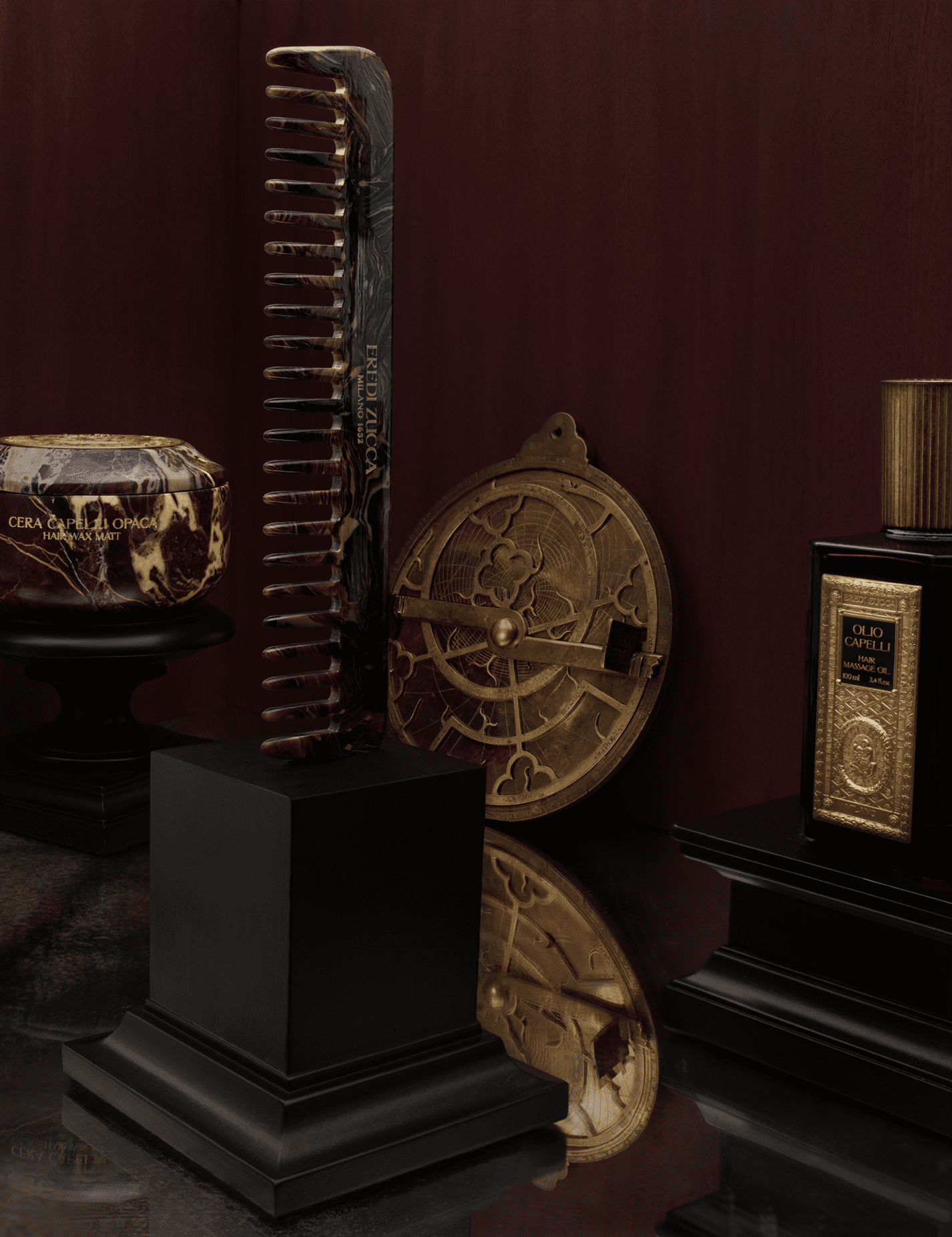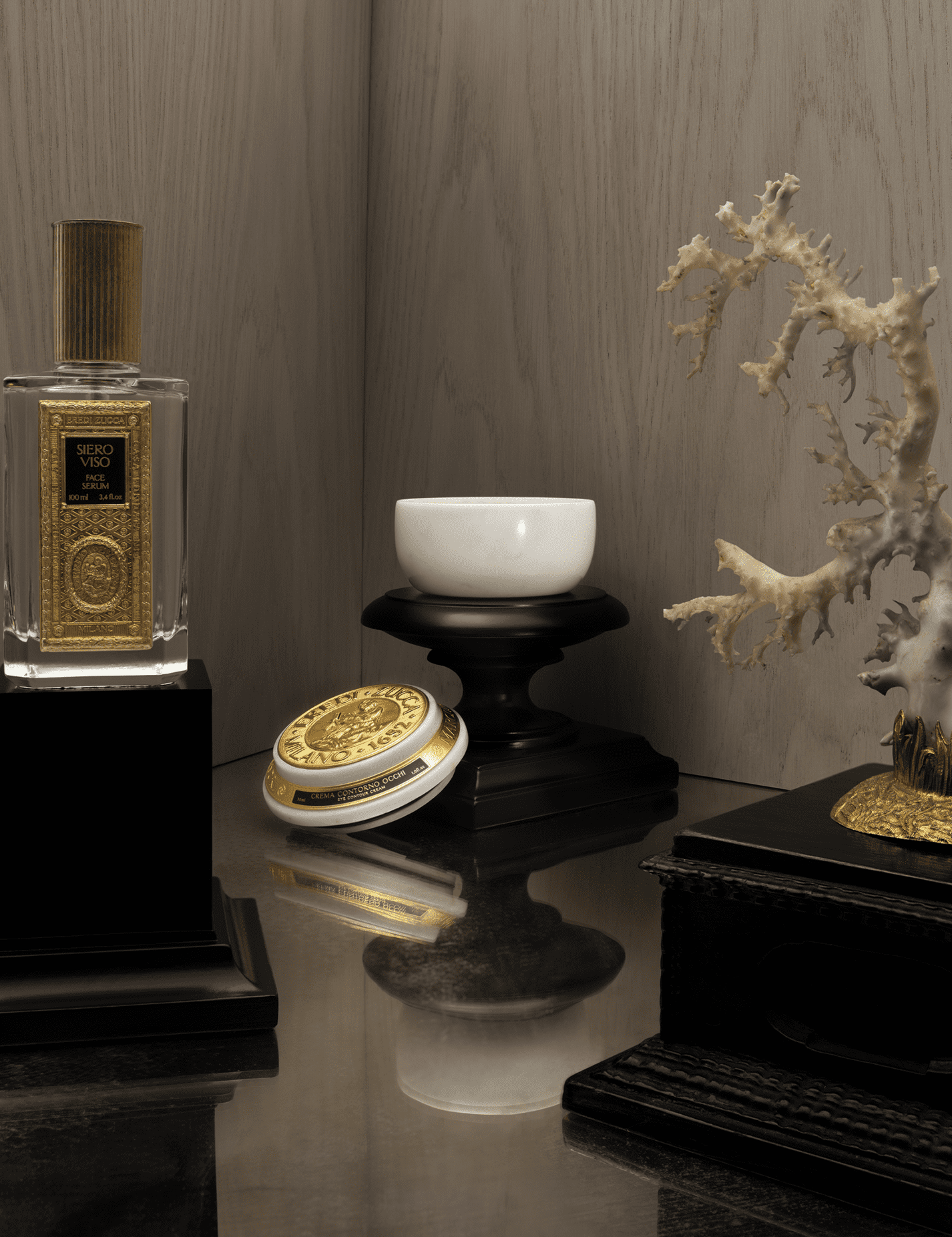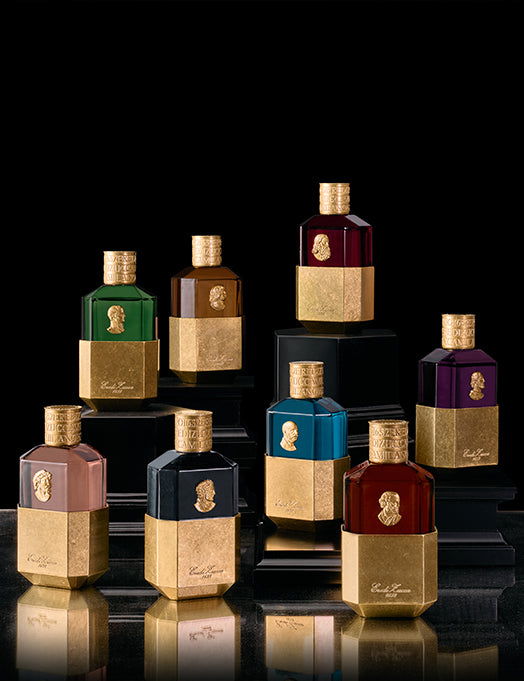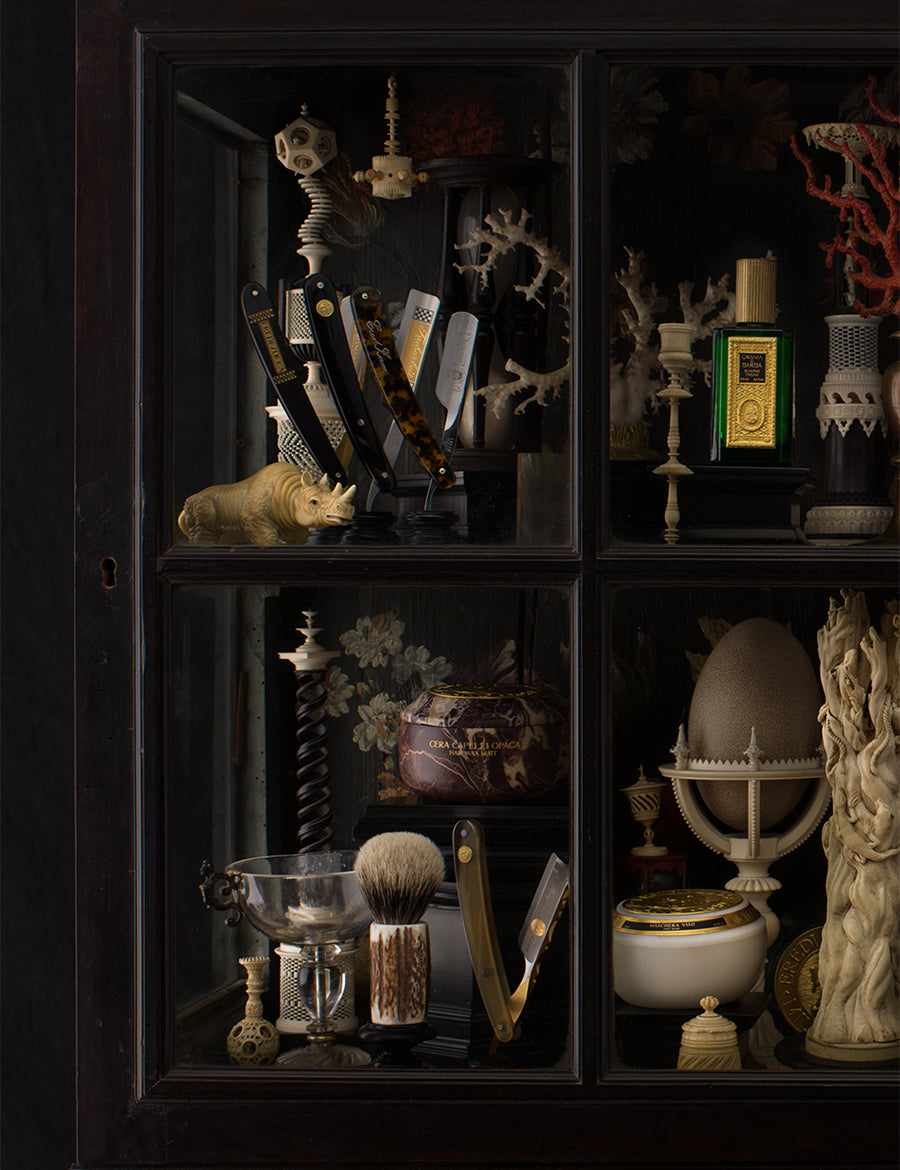Eredi Zucca: A journey through the astounding legacy of the Barbershop of the Milanese
ㅤ
This is the story (and legend) of the Zucca family, and more generally, all the barbers working in Milan under the ZUCCA brand between the 17th and 20th centuries to whom we wish to pay homage. Because we are on a mission to bring back the true barber experience, and one that re-evokes the memory of a glorious past.
ㅤ
Eredi Zucca: A journey through the astounding legacy of the Barbershop of the Milanese
ㅤ
This is the story (and legend) of the Zucca family, and more generally, all the barbers working in Milan under the ZUCCA brand between the 17th and 20th centuries to whom we wish to pay homage. Because we are on a mission to bring back the true barber experience, and one that re-evokes the memory of a glorious past.
ㅤ
1652
CHAPTER 1
ㅤ
ㅤIn 1652, when Carlo Antonio Zucca first opened his barbershop, Milan was a lively, flourishing city. People went about their everyday lives among the narrow paved streets and the bustling piazzas, beneath the gaze of the city’s imposing Gothic and Renaissance architecture. It was a period of change, where religious zeal coexisted with the emergence of a newfound commercial and artistic enthusiasm.
Observing this dynamic urban backdrop, Carlo decided to set up his barbershop. During this time, your local barber was a central figure in society: a barbershop wasn’t just somewhere you went to get your beard trimmed and your hair cut, but somewhere you could go for minor surgical and dental operations, as at that time, barbershops were still linked to medical practices.
ㅤㅤCarlo's decision to open a barbershop was no casual coincidence: he was in fact the son of a barber and had learnt the tricks of the trade at a young age. Nevertheless, his vision went far beyond his family tradition. Carlo’s ambition was to create a place that wasn't just an outlet for services, but a real hub for social interaction. And just as he dreamed, Carlo’s barbershop went on to become a place where men could meet, exchange ideas, discuss politics, or simply sit back and enjoy a quiet moment of relaxation.
During the 17th Century, the people of Milan began to develop an increasing interest in their personal appearance and hygiene. A well-groomed beard and tidy hair were a sign of respectability and status. With his skills and friendly demeanour, Carlo soon became a well-loved and respected figure in the community. And thanks to his attention to detail, the quality of his tools, and his ability to listen to and advise his clients, his reputation quickly grew.
Inside Carlo’s barbershop, the walls were adorned with ornate mirrors and the seats were comfortable. The story goes that Carlo was also a pioneer in the use of fragranced beard soaps and oils, introducing a taste of luxury during a time when such refinements were still rare.
And so, Carlo’s barbershop became a symbol of this new mood that was rapidly spreading throughout Milan: a city that was discovering the importance of individuality and personal well-being. With his exceptional initiative and talent, Carlo Zucca laid the foundations for a family legacy that would go on to endure century after century, marking a significant turning point in the city’s history.
1680 - 1690
CHAPTER 2: The Great Expansion - Giovanni Zucca and his Taste for Innovation
ㅤ
Giovanni, Carlo’s son, grew up amongst the barbershop’s armchairs and mirrors, learning his father’s art and secrets. He was an attentive, curious young man, who soon began to innovate, introducing oils and ointments that smelled of exotic, faraway lands.
Giovanni Zucca wasn’t just a barber: he was an innovator with an intuition for business and a love for new inventions. As Milan flourished, so did his barbershop. Certain sources actually claim that it was Giovanni who introduced the city’s very first adjustable barber chair, imported from France: a novel addition that attracted curiosity from all over Milan. The story goes that one particularly cold winter’s morning, a nobleman visiting Milan slipped in the snow right outside Giovanni’s shop. The barber is said to have come to his aid immediately, offering him somewhere warm to sit and a glass of brandy. And as he charmed the nobleman with pleasant conversation and an impeccable haircut, a solid friendship was born.
1700 – Turn of the Century
Chapter 3: The Seal of Distinction - Giuseppe Zucca and the Art of WigMaking
ㅤ
Giuseppe Zucca is thought to have been a man of vision, renowned not only for his skill as a barber, but as a creator of elaborate wigs during a time when they were seen as a symbol of status and sophistication. Legend has it that he once saved a Milanese Duke’s wig that had been completely ruined during an accident involving a candle.
Calmly and diligently, he managed to reconstruct the wig in time for an
important gala organised by the Duke himself. The Duke was apparently so grateful that from that point onwards, he made sure that all guests at his parties had their hair styled exclusively by Giuseppe.
1796 - 1815
Chapter 4: Storms of Change - The Resilience of Francesco Zucca
ㅤㅤㅤ
Francesco Zucca managed the barbershop during the Napoleonic Occupation, demonstrating exceptional resilience and humanity. Francesco was a man with a commanding presence and a booming voice that echoed loudly within the barbershop’s marble walls. His life was profoundly marked by the arrival of Napoleon and the turbulent events that followed. During the French Occupation, the barbershop suffered several lootings, but Francesco never lost his spirit. It’s reported that one night, whilst chaos ensued in the streets of Milan, Francesco treated the wounds of a French soldier, putting aside all political tension.
ㅤ
This act of humanity earned him and his barbershop respect and protection from the city’s new occupants. Guided by this inclusive vision, Francesco managed to navigate these turbulent years, preserving the Zucca barbershop as a haven of peace and neutrality. Having inherited the barbershop during a period of great turmoil, Francesco stood out not only for his ability as a barber, but also for his innovative outlook.
During the French Occupation, Francesco took advantage of the opportunity his barbershop presented to interact with the French soldiers, learning from them different techniques and approaches to the art of shaving. Some accounts go as far as to say that the “Zucca blade” was in fact inspired by French soldiers’ bayonets.
ㅤ
Meanwhile, another anecdote suggests the surprising origins behind the first ever natural bristle barber brush. Apparently, Francesco observed the brushes the soldiers would use to clean their uniforms and realised that a softer, more flexible version would be the perfect tool with which to apply shaving soap. In collaboration with a local artisan, he developed a brush that allowed him to distribute the soap perfectly evenly, significantly improving the overall shaving experience.
ㅤ
Thanks to this cutting-edge approach, the Zucca barbershop became a benchmark in the shaving industry for quality and innovation, propelling it to fame across the whole of Milan.
1815 - 1848
Chapter 5: A New Dawn - The Zucca Vision
ㅤ
The Zucca family transformed their barbershop into a meeting place for intellectuals and revolutionaries during the Five Days of Milan.
ㅤ
Located just off Via Bigli, it was in the centre of an area frequented by influential figures of that time. Who knows how many illustrious guests, patriots and revolutionaries living in pre-Risorgimento Milan indulged in the inviting atmosphere of the modest Zucca barbershop. The barbershop’s location became even more significant during the Five Days of Milan, when the surrounding streets became the stage for riots and revolts: the Zucca barbers found themselves quite literally in the middle of a defining episode in the History of Italy.
During those tumultuous years, the barbershop wasn’t only a place for haircuts and shaving, but a hub for revolutionary ideas and a sanctuary for freedom of expression. And so, with their passion for culture and their open-mindedness, the Zuccas transformed it into a vibrant symbol of the Italian Risorgimento.
1859 - 1861
Chapter 6: The Barber’s Art during the Unification of Italy - Matteo Zucca and Innovation
ㅤㅤ
The Zucca barbers took their barbershop with them into the Italian Risorgimento.
ㅤ
During that time, Milan was a melting pot for culture and new ideas: it was a city undergoing rapid modernisation. The streets were filled with literary cafés, theatres and cultural salons, where the elite would discuss politics, art and literature. Against this backdrop of rejuvenation, fashion and personal grooming began to be seen in a more progressive, cosmopolitan light.
Influenced by European trends, Milanese men began to pay more attention to their appearance. A well-groomed beard, an elegantly styled moustache and neatly combed hair became a symbol of sophistication and status. And the barbershop became the epicentre of this new wave. Barbers began to import oils and fragrances from the East and France, introducing exotic scents like sandalwood and bergamot, which were highly requested by their more elite customers.
ㅤ
The Zucca barbershop lived through a period of monumental change: the Unification of Italy. Always ready to experiment, the story goes that during the cholera outbreak in 1854, they transformed part of the shop into a dispensary, offering healthcare and medical advice, earning them the title “Barbershop of the Milanese”.
1880 - 1900
Chapter 7: A Guiding Light - Bernardo Zucca and the Belle Époque
ㅤ
Bernardo Zucca ran the barbershop during the Belle Époque, combining his trade as a barber with art.
ㅤ
The Milan of that era was culturally thriving. The streets were filled with elegant cafes, luxurious theatres and art galleries. The trends and lifestyles of the time reflected a general feeling of optimism and a taste for refinement, with a growing interest in Parisian fashion and modern art.
Legend has it that Bernardo Zucca was a man of great charm and intelligence. Under his guidance, the Zucca barbershop was a shining light in the heart of Belle Époque Milan. It’s likely that this period of bubbling cultural excitement also inspired him to transform the barbershop into a place where beauty, art and culture could be united in perfect harmony.
ㅤ
During the Belle Époque, Milan underwent a period of huge social and economic change. New technologies, like gas and then electric lighting, transformed the city into a vibrant place, even at night. The boulevards were filled with coaches and pedestrians, and the Milanese people revelled in the city’s bustling cultural life, regularly frequenting the opera, ballet and art exhibitions.
With his avant-garde vision, Bernardo Zucca soon realised that a barbershop could be more than simply a service provider: it could also be a nucleus of cultural exchange and a symbol of the liveliness and elegance of Belle Époque Milan.
1906 - 1912
Chapter 8: Innovation meets Tradition - Giuseppe Enrico Zucca and New Horizons
ㅤ
Giuseppe Enrico Zucca succeeded in adopting new technologies whilst staying true to tradition during the modernisation of Milan.
ㅤ
We like to imagine that Giuseppe Enrico Zucca, the son of Bernardo, perfectly incarnated the spirit of a period defined by a thirst for modernity and a loyalty towards tradition. In the very heart of a Milan that was rapidly embracing technological innovation, Riccardo introduced around twenty new inventions to the barber’s trade, without ever forgetting his ancestors’ legacy.
ㅤ
In the early 20th Century, Milan underwent a drastic transformation: electric trams replaced horse-drawn carriages, the roads were illuminated with electric lights, and the Turin International broadcast this new industrial, creative side to the rest of the world. Within this context, Giuseppe Enrico may also have been one of the first Milanese people to experiment with the use of electricity in grooming: his “electric revitalising treatment”, which used a gentle electric current to stimulate the hairs, quickly became popular, attracting attention both for of its efficiency and its novelty.
ㅤ
One particularly significant story goes that Giuseppe Enrico was paid a visit from a famous actor from the Teatro alla Scala, who dropped into the Zucca barbershop for a shave the night before opening night. The actor, who was initially sceptical, was so astounded by the results that he became an enthusiastic promoter of this new technique, and helped to spread its good reputation far and wide.
ㅤ
The barbershop became a go-to for Milanese people who didn’t just want a flawless shave, but also a forward-looking grooming experience. Adorned with images of Milan’s modern innovations, the walls inside the barbershop reflected everyone’s pride for a city that was looking towards the future with confidence and optimism.
ㅤ
Under the guidance of Giuseppe Enrico, the Zucca barbershop not only maintained its reputation for excellence, but also became an emblem of the perfect balance between respect for tradition and passion for innovation.
The Priceless Legacy of the Zucca family and their Milanese Barbershop
ㅤ
The story of the Zucca family is more than just a tale of a family of barbers. It’s the story of a legacy that transcended centuries, surviving wars, social upheaval and cultural revolution. Every single generation of Zuccas has left their own unique mark, not just on their trade, but on the beating heart of Milan.
ㅤ
Today, this new business venture isn’t just about paying homage to the Zucca barbershop and its Milanese barbers. It’s about capturing the family’s priceless legacy, so that it can never be forgotten, encapsulating its tradition through a genuine living museum, a place where people can come together and a symbol of the resilience and innovation that define the spirit of Milan, and remembering their commitment to excellence, the community and the preservation of tradition.
We are bringing the cultural heritage in which the ZUCCA brand is so deeply rooted into the 21st Century, with the hope that new generations have the chance to appreciate the historical identity we’re so committed to honouring and protecting.

























